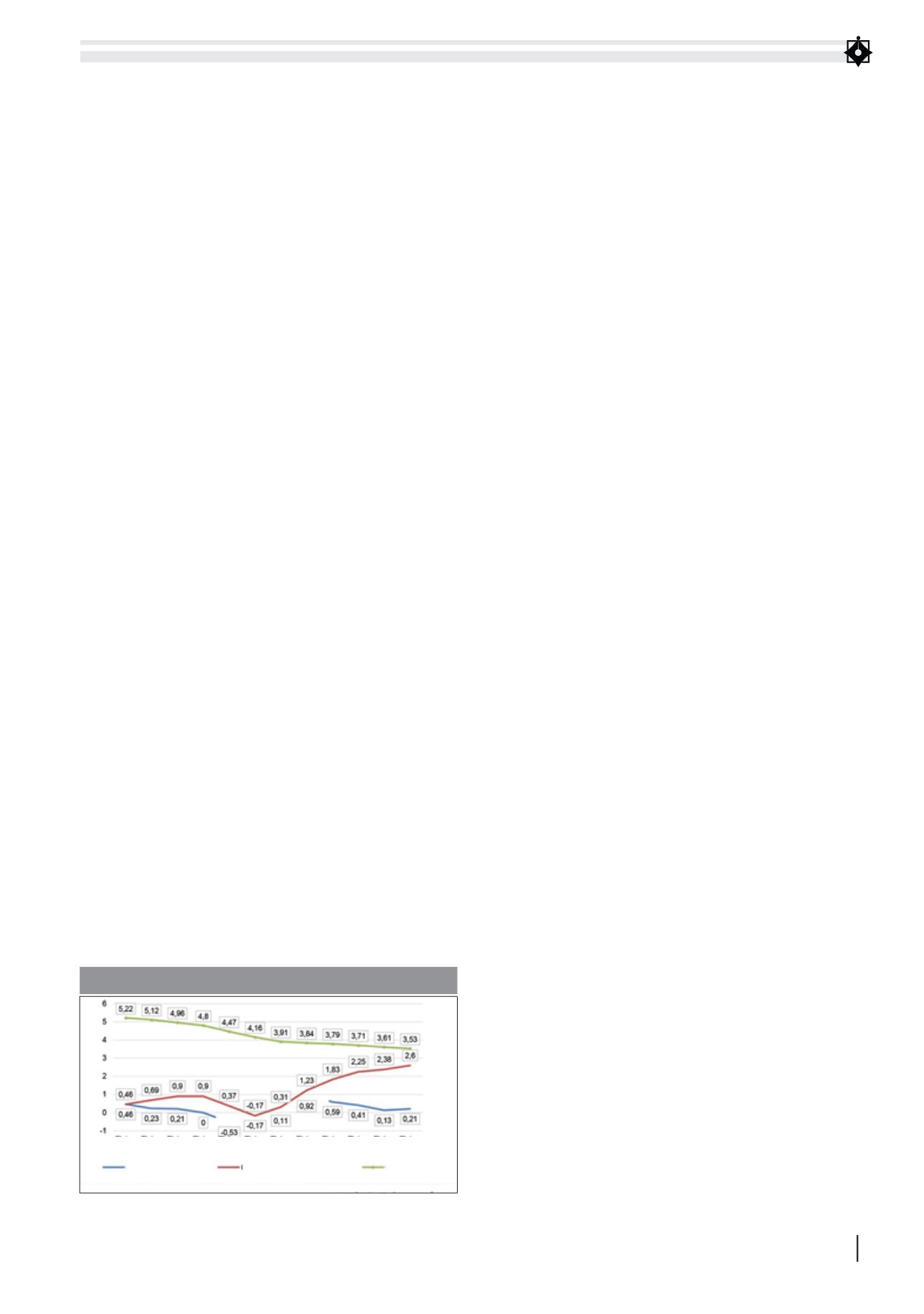
REVIEW
of
FINANCE -
Feb. 2018
29
with other ministries and sectors in suggesting price
steering schemes and offering suitable price steering
solutions aiming at controlling inflation as required
by the Parliament. In addition, fiscal policies were
also regulated flexibly to stabilize exchange rates
and average interest rates. The average CPI growth
rate was controlled effectively, helping steer prices of
some State-run commodities.
Results of pricemanagement in 2017
In 2017, price management was given a close
cooperation between ministries, sectors and
macroeconomic management agencies via the
Steering Committee on Prices, Division of Macro
issues, Division of domestic market management…
Accordingly, sufficient costs were included in fees of
public services (such as health care, education…), not
resulting to any big change in the general price level.
In addition, prices of essential commodities (such as
petrol, electricity, coal, clean water, medicine, health
care, education, rice, milk for children below 6 years
old, fertilizer, animal feed, cement, steel, LPG…)were
regulated in accordance with market mechanism
as well as state management as stated in Law of
Prices and other related laws. Also, the enhanced
transperancy in steering prices of these commodities
made a contribution to a concensus and supervision
of the society.
Forecast of inflation in 2018
In 2018, the economy restructuring and the
implementation of resolutions to enterprises
difficulties in 2017 will continuously have positive
impacts on the economy, showing a clearer signal
of domestic economic recovery. However, 2018 also
implies inflation risks due to impacts of effect lag of
policies to remove difficulites for production and
business activities. In addition, there have been a lot
of changes in international economy and politics,
which would affect the domestic economy.
At the fourth session, the XIV National Assembly
adopted the Resolution on the socio-economic
development plan in 2018, which works to contain
average CPI at 4 per cent. Although the targeted
increase in CPI in 2018 is the same as that in 2017,
the price management and steering in 2017 showed
that it should be very cautious due to a plenty of
factors predictedly bringing pressure on prices at the
beginning of 2018 as follows:
significant impact on CPI in 2017.
Secondly,
rises in prices of petrol and other
materials on international markets made an impact
on domestic prices via import channels: as of
December 15th 2017, in accordance with changes in
international petrol markets, domestic petrol prices
have fluctuated 15 to 18 times for each certain type
respectively. In comparison with those in 2016, retail
petrol prices went up by 921-1,748 VND/litre or kg,
equivalent 5.32%-16.44%.
Thirdly,
regional minimum wage applicable to
employees in enterprises rose by about 7.3%, which
was imposed on January 1st 2017. There was a rise
of 90,000 VND, imposed on July 1st 2017, in base
salary applicable to officials, public servants, salary
and allowances receivers, and employees working in
state budget funded organizations and agencies.
Fourthly,
supply of some agricultural products
was locally affected by floods and storms in some
areas, leading to an increase in their prices in some
certain times.
Main reasons for a slowdown inCPI growth in 2017
Firstly, the first half of 2017 witnessed the decline
in prices of foods. In particular, prices of pork
meat decreased significantly due to the rise in the
supply whereas demand for pork meat was stable
nationwide and exports via unregistered channels
were restricted.
Secondly, price steering and market stabilization
in 2017 were given an effective cooperation between
ministries, sectors and localities thanks to the strict
and strong guidance of the Steering Committee on
Prices, the Government and PrimeMinister. Ministry
of Finance playing a standing role in the Steering
Committee on Prices paid more attention to the
forecast of market prices, enhanced its cooperation
Jan Feb Mar Apr May Jun Jul Aug Sep Oct Nov Dec
CPI compared to
previous month
CPI compared to
previous year
Average CPI
CONSUMER PRICE INDEX 2017 (%)
Source: Price Management Department


